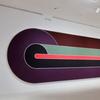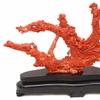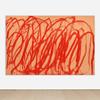New Ground: The Southwest of Maria Martinez and Laura Gilpin at National Museum of Women in the Arts
- WASHINGTON, DC
- /
- January 12, 2017
The National Museum of Women in the Arts (NMWA) presents New Ground: The Southwest of Maria Martinez and Laura Gilpin, on view from Feb. 17 through May 14, 2017. Contemporaries and friends, potter Maria Martinez (ca. 1887–1980) and photographer Laura Gilpin (1891–1979) shaped the image of the Southwest as a culturally rich region fostering artistic expression. Martinez’s bold adaptation of an ancient black-on-black pottery design technique reflected her Pueblo artistic traditions and appealed to a minimalist modern sensibility. Gilpin, hailed during her lifetime as the “grand dame of American photography,” was one of the first women to capture the landscape and peoples of the American West on black-and-white film.
New Ground features 26 works of pottery by Martinez and 48 platinum, gelatin silver and color print photographs by Gilpin, drawn primarily from the Eugene B. Adkins Collection at the Philbrook Museum of Art, Tulsa, and the Fred Jones Jr. Museum of Art at the University of Oklahoma, Norman.
“New Ground counters dominant 19th- and 20th-century narratives that typically cast the American West as a masculine place of staged romance or rugged conquest,” said NMWA Director Susan Fisher Sterling. “The exhibition explores how Martinez and Gilpin refined the image of a modern Southwest during the mid-20th century as a space for communal creativity and connection.”
Martinez lived at San Ildefonso Pueblo, north of Santa Fe, N.M. Together with her husband, Julian, Martinez revived an ancient method of making black-on-black pottery. She traveled throughout the U.S. to demonstrate the technique for making her sleek, thin-walled ceramic vessels, creating a wide demand for her work, which is still sought after today. She was one of the first Pueblo artists to sign her works, examples of which are found in collections across the globe. Her work inspired generations of artists, including her own family, several of whom still produce pottery at the San Ildefonso Pueblo.
Gilpin was born in Colorado in 1891 and studied photography in New York at the Clarence H. White School from 1916 to 1917. She was drawn back west, by her own account, to be in the “mountain country” where she felt she belonged. She is best known for her documentary prints, which include aerial landscapes and intimate portraits, images that capture the geological marvels of the landscape, as well as the fine details on the faces of her sitters. Over six decades, Gilpin documented the Southwest and its people, experimenting with a variety of photographic techniques and styles to capture her own connection to the region.
“Works by Martinez and Gilpin illuminate continuing connections between the Southwest’s land, its inhabitants and their art-making traditions, while at the same time contributing to the creation of a modern aesthetic,” said NMWA Associate Curator Virginia Treanor.
LANDSCAPE
Martinez’s pottery is formed from and decorated with clays dug from the earth near her home. Stylized depictions of local flora and fauna as well as mythical creatures like Avanyu, a feathered serpent and water guardian, are found on many of the works on view. Other motifs include birds, road runner tracks, rain, feathers, clouds and mountains.
In a field traditionally championed by men, Laura Gilpin was one of the first women to capture the landscape of the West on film and to comment—through her imagery and her writings—upon the interconnectedness between the environment and human activity. Hefting heavy camera equipment, Gilpin trekked great distances by foot, jeep or plane to reach remote locations in pursuit of views, often flying dangerously low in airplanes to achieve her aerial shots. Unbounded by physical risks and societal restrictions, Gilpin pursued photography in the Southwest well into her eighties.
PEOPLE
Initially encouraged by Edgar L. Hewitt and Kenneth Chapman from the nascent New Mexico Museum, Martinez developed a distinctive style of pottery that continues to resonate among artists today. Her relationships with family, community members, friends and collectors profoundly shaped her creative life. She collaborated with her husband, sons (particularly Popovi Da), daughter-in-law and grandson. In keeping with the collective principles of the Pueblo, she also signed her name to works made by others so that all might share in the benefits of her popularity.
Educated at Eastern boarding schools, Gilpin was the daughter of a Western adventurer. Like her father and many others who relocated to the region in the early 20th century, she felt deeply connected to the landscape and described her compulsion to document its rugged terrain. Gilpin considered herself a landscape photographer, but her photographs chronicling people and their activities are perhaps her most distinctive work. Like other photographers documenting the American scene during the 1920s and ’30s, Gilpin’s portraits capture the humanity and changing living conditions in rural America. She focused her lens on the American life she came to know among the Pueblo and Navajo peoples.
PROCESS
Martinez learned the fundamentals of the laborious process of pottery making at a young age from her maternal aunt. She shaped the clay, dug from the surrounding earth, into long coils, following a centuries-old tradition. She then stacked the coils one on top of another and smoothed them into a flat, thin wall as she worked. The earliest work made by Martinez and decorated by her husband was polychrome, the most common type of pottery at San Ildefonso Pueblo at the time. They based these pieces on the remains of ancient pottery excavated in 1907. By 1921, they perfected their process for making black-on-black pottery.
Gilpin frequently focused her lens on the art-making processes of her Pueblo and Navajo subjects. Some images highlight technique, while others emphasize artists’ range of creativity. Gilpin photographed Martinez and her family at San Ildefonso Pueblo during the many stages of making pottery, from processing raw clay to shaping bowls and jars, painting decoration and firing the vessels. She never photographed anyone without their permission, and frequently formed relationships with her subjects, particularly Martinez and her late subjects from the Navajo Pueblo in Arizona.
Gilpin herself became famous for her role in reviving the platinum printing process—a complex method yielding a rich tonal range and crisp details—largely abandoned by the early 20th century. Much like Martinez, Gilpin built her reputation on the revival of a historical art form and a body of work inspired by the Southwestern earth. She continued working with this laborious process periodically throughout her career, while also exploring the expressive possibilities of color photography.
New Ground is organized by the Philbrook Museum of Art, Tulsa, Oklahoma. Initial support for the exhibition was provided by Philbrook Exhibition Series Sponsors (2011–2013), in particular the Raymond and Bessie Kravis Foundation.
The presentation of New Ground at the National Museum of Women in the Arts is made possible by the generous support of the Judith A. Finkelstein Exhibition Fund and the members of NMWA.
Related Programs
Free Community Day
Friday, February 17, 10 a.m.–8 p.m.
In celebration of the opening day of our new spring exhibitions, visit us during a FREE, extended-hours Community Day. Take this opportunity to explore our two new exhibitions, Border Crossing: Jami Porter Lara and New Ground: The Southwest of Maria Martinez and Laura Gilpin, along with our newly reinstalled collection. Free. No reservations required.








45100x100_c.jpg)




![Peter Paul Rubens (Flemish, 1577–1640), After Titian (Tiziano Vecelli) (Italian [Venetian], c. 1488–1576), Rape of Europa, 1628–29. Oil on canvas, 71 7/8 x 79 3/8 in. Peter Paul Rubens (Flemish, 1577–1640), After Titian (Tiziano Vecelli) (Italian [Venetian], c. 1488–1576), Rape of Europa, 1628–29. Oil on canvas, 71 7/8 x 79 3/8 in.](/images/c/e2/2e/Jan20_Rape_of_Europa100x100_c.jpg)


